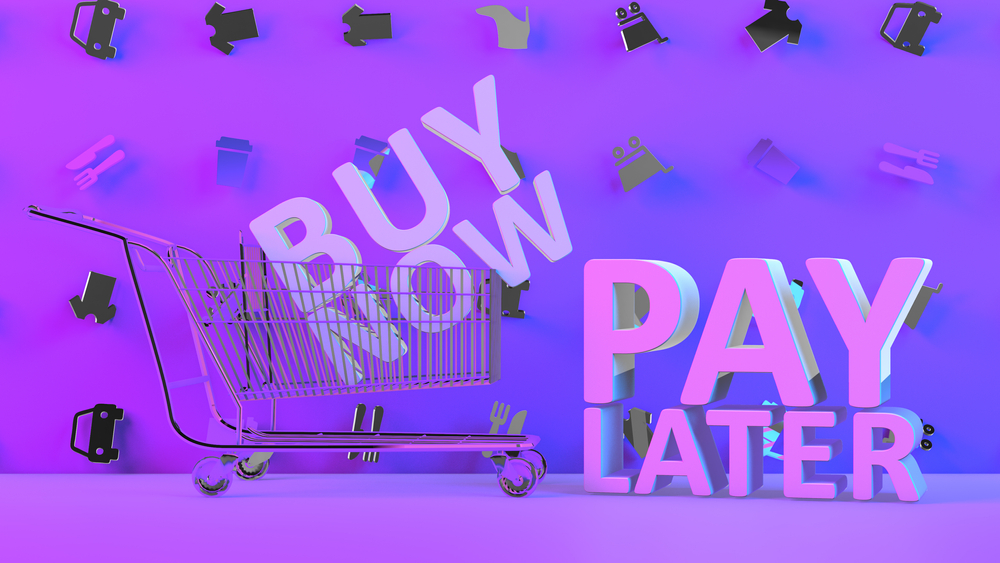Buy now, pay later (BNPL) methods are short-term financing options. Like credit cards, they allow your customers to try before they buy and spread larger purchases into manageable instalments.
BNPL has been around for some time, but the pandemic and the cost-of-living crisis have been the main catalysts in its popularity. Businesses have embraced this payment method to reach more customers and make their products and services more accessible, and customers now have more convenient payment options.
In this post, leading company formation agent, 1st Formations, explains what BNPL is, how it works, and how the market has grown. They also highlight the main pros and cons of BNPL for both brands and shoppers and share some guidance on how to set up BNPL for your business.
BNPL is an alternative payment method that lets customers pay for products and services in instalments over time. Rather than paying the full amount upfront, they can spread the cost with a payment plan that suits them.
BNPL services often offer interest-free or low-interest repayment options with the appeal of making larger purchases more manageable.
How does buy now, pay later work?
BNPL works similarly to credit cards. When a customer makes a purchase, they essentially take out a loan. This is used to cover the full payment to the company they are shopping with.
The customer then has a pre-agreed amount of time to complete their instalments and return the full amount to the BNPL provider.
BNPL works in the following way:
- Customer shops with you
- When they’re ready to pay, the customer selects BNPL as their preferred payment method
- The BNPL provider runs a soft credit check before approving the purchase
- The customer chooses a payment plan that suits them
- You receive the full payment from the BNPL provider
The growth of buy now, pay later
The BNPL market has grown tremendously on a worldwide scale. Fuelled by the credit crunch in 2008, the concept of delayed payments became increasingly attractive to both customers and businesses.
Fast forward to 2021, record-high inflation squeezed budgets all over the UK and people became more reliant on BNPL. Now, a Finder report shows that 36% of UK consumers using it. That’s a 200% increase since 2022, with a further 13% intending to use it in the future.
Which customers use BNPL?
The Finder report also highlights that over half of UK buy now, pay later users are millennials (1981-1996). They are followed closely by Gen Z (1997- 2012) at 43%, and Gen X (1965-1980) at 35%.
While it is mostly younger generations using BNPL, its usage has doubled among older generations over the last year, too.
What is BNPL used for?
The most common purchase types that people use buy now, pay later for are:
- Non-essential (wants rather than needs)
- Clothing essentials
- Household bills
- Essential travel
- Food
Criticisms of buy now, pay later
While interest-free and flexible payments make BNPL particularly appealing to shoppers, some of its criticisms are concerned with the potential risk of debt, particularly for those on a lower income.
The Finder statistics mentioned above also show that nearly 30% of BNPL users in the UK are on a low annual salary of £15,000 or less. They are also more likely to be offered BNPL services. Among others, the Federal Reserve Bank of New York argues that this “disproportionate share” of BNPL targets the financially fragile and questions the resilience of the payment service.
Furthermore, nearly a quarter of UK BNPL users failed to pay their instalments on time, resulting in extra fees quickly piling up. This calls the regulations on BNPL into question.
The good news is that these growing concerns have caused the government to act and protect consumers. Before a BNPL transaction is approved, an affordability check is carried out to assess the customer’s ability to make the necessary repayments.
Individual providers have also made alterations to tackle debt risk. For example, Laybuy now freezes customers’ accounts when payments fail, meaning they can’t make any further purchases until those repayments are cleared.
There is evident controversy around BNPL, but as the market evolves, it is becoming more controlled to protect its users where possible.
What are the pros and cons for customers?
Pros
- Manageable payments: When making larger purchases, buy now, pay later helps customers split their payments into smaller, more manageable amounts. This is particularly handy in emergencies.
- Free financing: BNPL providers normally offer low or 0% financing options with no additional fees (subject to payments being made on time). This means that customers don’t need to pay extra for taking out this short-term loan.
- Credit score boost: If repayments are made on time, it can help customers improve their credit scores.
- Convenience: It’s easy to set up a BNPL account and approvals are normally quick and easy.
If a customer is wary of saving their personal card details on a site, doesn’t have their card on them, or has insufficient funds at the time, BNPL offers a convenient and hassle-free way of checking out.
Cons
- Possible overdrafts: Customers can fall into overdrafts if they have too many direct debits or scheduled payments set up without the correct funds to cover them.
- Fees and interest: The terms are different per provider, but normally, you can incur fees and interest on missed or late payments.
What are the pros and cons for businesses?
Pros
- Receive payments upfront: If a customer doesn’t have the funds at the time, buy now, pay later means that you can still serve a happy customer whilst receiving payment upfront.
- Reach more customers: BNPL is very popular and could help you reach a wider audience such as younger customers, those without a credit card, and budgets of all sizes.
- Improve customer experience and retention: One of the main appeals of BNPL is a more seamless and fuss-free payment journey, resulting in a quick and simple user experience. This also means they are likely to return and check out even more quickly and easily with an existing BNPL account.
- Increase conversion/order value: You can boost customer conversion with BNPL if you sell luxury goods, or increase the average basket spend if you sell lower-priced goods or services.
Cons
- Additional fees: Depending on the provider, you may need to pay set-up or processing fees.
- Limited options: If you run a subscription-based or recurring payment business, you may not have as many BNPL providers to choose from.
- Potential loss of customers: A customer’s credit score is affected if they are not approved by the BNPL provider. This could result in lost business.
Which industries can use buy now, pay later?
With so many worldwide providers, BNPL can benefit a wide range of industries – both online and offline. You could use BNPL in the following sectors and beyond:
- Courier and logistics
- Food and agriculture
- Hospitality
- Fashion, home, and interior
- Construction
- Events
Top BNPL providers

To set up BNPL for your business, you’ll need to research different providers. You should look for easy integration into your website or app and ease of use for the customer.
Here are some of the most popular BNPL providers and their USPs:
Klarna
- Available online and in-store
- Optimise your marketing campaigns with Klarna
- Used by many popular brands
Clearpay
- Customers can set spending limits to minimise the risk of debt
- Connects you with new customers
- One of the top-rated BNPL apps used by popular brands
Laybuy
- No risk of fraud
- The ‘Laybuy boost’ feature lets customers make purchases over their credit limit and spread the cost further
- Seamless integration
Payl8r
- Suitable for retail, travel, and beauty companies
- 24-hour payout
- Simple checkout solutions are designed to reduce basket abandonment
How to set up a BNPL for your business
Setting up BNPL for business is normally a straightforward process. Once you have chosen your provider, you’ll need to create an account with them. You can then incorporate it into your software – either online or in-store.
To let new and existing customers know that you offer BNPL, it’s useful to invest in some form of advertising. You could try a simple social media update or a banner on your website, for example.
When a customer shops with you using BNPL, they will either need to sign up with the provider at the point of purchase or use an existing account.
Wrapping up
BNPL has taken the world by storm, and it is predicted to continue an upward trajectory. It generally presents very few risks for merchants and could offer considerable advantages like reaching new customers, retaining existing clients, and boosting revenue.
1st Formations is one of the UK’s leading company formation agents. They have helped form over 1 million companies with their range of service packages, which include digital, professional, and all-inclusive. Visit their website to find the perfect package for your business.







Leave a Comment
You must be logged in to post a comment.